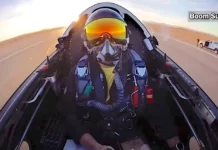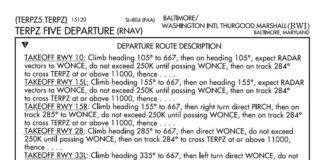Aireon Aims To Eliminate Lost Aircraft
Search-and-rescue delays after an airplane crash will become a thing of the past, with Aireon’s global satellite network in place, the company says. Aireon says the system will be ready to go online in 2019. “As long as an aircraft is broadcasting on 1090 MHz ADS-B, we will be able to locate it anywhere worldwide,” said Peter Kearney, CEO of the Irish Aviation Authority, one of the partners in the new system. General aviation users don’t need to pre-register, but search-and-rescue teams can contact the company for location data. The rescue capability is offered as a free service to the aviation community, Aireon says.
Eco-Groups Question Sst Plans
With an effort to lift the ban on supersonic flight above the U.S. in play in Congress, a coalition of 38 environmental and health advocacy groups urged lawmakers to uphold the current restrictions. The new jet designs would burn up to “seven times more fuel per passenger” compared to today’s airliners, according to the coalition’s news release. “Resurrecting these flying gas-guzzlers would cause the aviation industry’s already massive climate damage to skyrocket,” said Bill Snape, senior counsel at the Center for Biological Diversity. Spike Aerospace, which hopes to fly a new supersonic airliner prototype by 2023, responded with a news release, saying the jet they are working on will “minimize emissions, maximize fuel efficiency and economy, as well as reduce noise around airport zones,” and will meet “stringent requirements” set by both the FAA and ICAO.
Aopa Nall Report: Fatal Ga Crashes In Decline
Both overall and fatal accident rates in general aviation have reached a 10-year low, the AOPA Air Safety Institute said in its annual Joseph T. Nall Report, released in September. Based on data from 2015, the report found pilot error remains the leading cause of GA accidents, accounting for about 74 percent. “These accidents are often caused by lack of proficiency and poor decision making, and they typically lead to controlled flight into terrain, loss of control, or continued VFR flight into IMC,” said Richard McSpadden, executive director at ASI. Accidents related to mechanical and maintenance issues made up about 16 percent of the total.
Faa Warns Against Wrong-Surface Landings
In the last two years, 596 aircraft in the U.S. landed or almost landed on the wrong runway or wrong airport, and 85 percent of those events involved general aviation aircraft, according to the FAA. At a Safety Summit held in Leesburg, Virginia, in September, the FAA said these types of incidents are one of the top five hazards in aviation. “I’m asking each of you to make this a priority,” FAA Acting Administrator Daniel Elwell said at the meeting. In a Safety Alert for Operators, the FAA cited several best practices for pilots to ensure they are lining up on the correct runway, such as checking NOTAMS, stabilizing the approach, making good use of the available technology and being ready to go around. About 75 percent of incidents involve parallel runways, and parallel taxiways also can cause confusion.
Darpa Studies Brainwave Pilot Tech
A person with a microchip surgically implanted in their brain can pilot a swarm of drones by sending signals using only their thoughts, an ability that also should work for full-scale aircraft, according to researchers at the Defense Advanced Research Projects Agency. The technology was discussed at a symposium held by DARPA, in Maryland. “The signals from those aircraft can be delivered directly back to the brain so that the brain of that user [or pilot] can also perceive the environment,” said Justin Sanchez, director of DARPA’s biological technology office. “It’s taken a number of years to try and figure this out,” Sanchez said.
NOTAMS…
The FAA says white-tailed deer are the No. 1 strike hazard at airports…Girls in Aviation Day, a global event, is set for October 13…Stratolaunch unveiled a family of launch vehicles to pair with its giant spaceplane…Breaking news in general aviation can be found at www.avweb.com.




